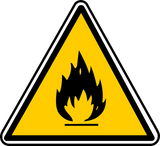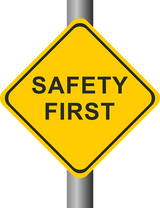6 Home Heating Safety Tips to Prevent House Fires

With winter approaching, millions of homeowners will be turning up the thermostat to create a warm and comfortable living environment. While there's nothing wrong with using your home's central heating, though, you should follow some safety tips to lower the risk of a house fire. Each year, tens of thousands of homes in the United States are set ablaze from improper use of heating. To lower the risk of a house fire, consider the six following safety tips when heating your home.
#1) Get Your Furnace Inspected
When was the last time that your home's furnace was inspected? If it's been over a year, you should consider calling a local HVAC company to have it inspected. Furnaces can degrade and fail over time. When this occurs, it may lead to a house fire.
#2) Don't Use Your Stove or Oven for Heating
Never use your stove or oven for heating. While both of these kitchen appliances can produce heat, they shouldn't be used for this purpose. If you leave a stove or oven unattended, it could ignite nearby items, which can then spread to other parts of your home.
#3) Keep Space Heaters at a Safe Distance
You can use space heaters to heat your home, but you shouldn't place them too close to furniture, walls, objects or anything else. Space heaters produce a substantial amount of heat. As a result, they can ignite these and other items. To lower the risk of a house fire, give all your space heaters at least 3 feet of space in front of them.
#4) Change the Air Filter
Another safety tip to lower the risk of house fires is to change your HVAC system's air filter. Both the air conditioner and the furnace will pass air through a filter. If the filter is clogged, the hot air produced by the furnace may catch it on fire.
#5) Open the Flue When Using Your Fireplace
If you're going to build fires in your fireplace this winter, remember to open the flue. Found inside the chimney, the flue is a valve that's used to control airflow. When the flue is open, air can flow into and out of your fireplace. When it's closed, on the other hand, the chimney becomes sealed, thereby preventing air from flowing into and out of your fireplace.
#6) Test Your Carbon Monoxide Detectors
Finally, it's a good idea to test all the carbon monoxide detectors in your home to ensure they trigger a loud alarm or siren. If a detector is dead, it won't alert you or your family members to the presence of carbon monoxide.
Recent Posts
-
Fire Safety in the Workplace: What You Need to Know
What steps are you taking to prevent fires in your workplace? According to the U.S. Occupational Saf …Aug 23rd 2023 -
Is It Safe to Go Jogging With a Cold Infection?
If you're suffering from a cold infection, you might be wondering whether it's safe to go jogging. T …Aug 22nd 2023 -
5 Safety Tips to Follow When Using a Powder-Actuated Tool
Powder-actuated tools are commonly used to join materials to steel and concrete. Also known as Hilti …Aug 20th 2023




